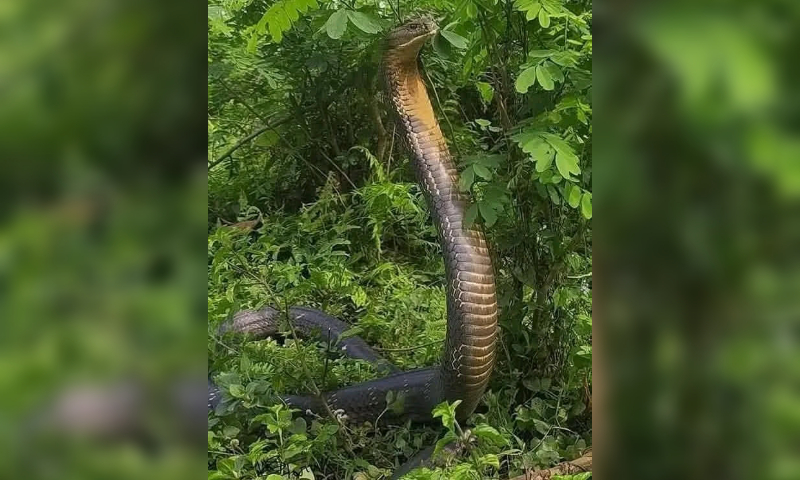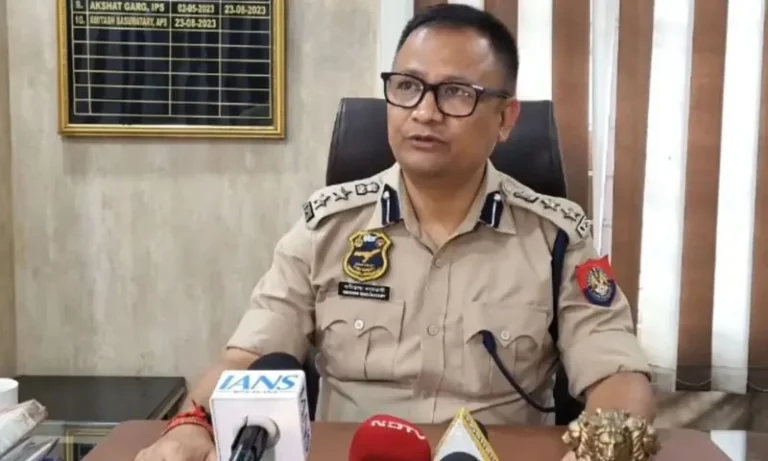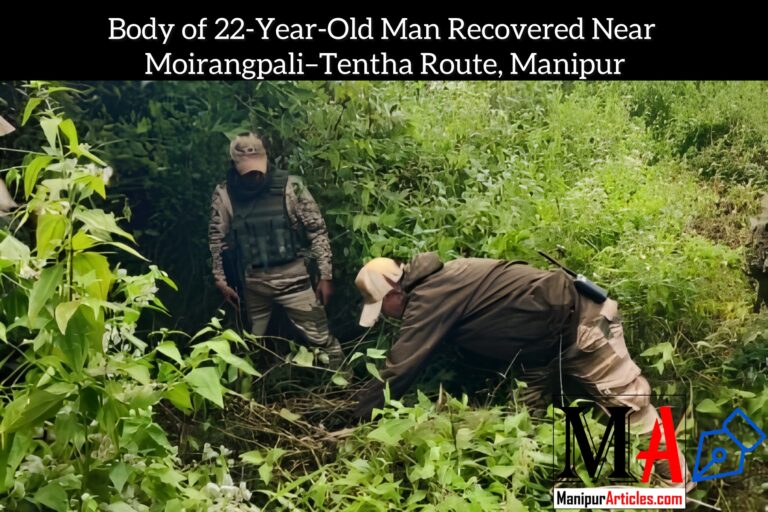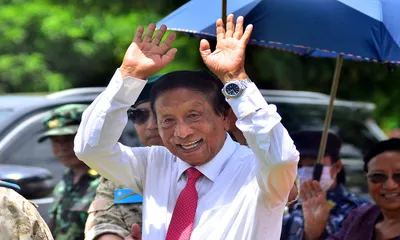King Cobra Exits Assam Forests: A Warning Sign of Ecological Collapse
Summary
In recent months, residents across Assam—from Dibrugarh and Golaghat to the outskirts of Guwahati—have reported unprecedented sightings of King Cobras in schools, hospitals, homes, and markets. Once confined to lush forest canopies, these apex predators are venturing into human-dominated areas driven by rampant habitat loss, prey depletion, erratic climate patterns, and expanding infrastructure. Between 2001 and 2023, Assam lost over 324,000 hectares of forest, fragmenting the natural corridors cobras use to hunt and breed. Monsoon floods further displace them from flooded burrows, pushing them toward dry, populated zones. As specialists in snake conservation warn, the King Cobra’s migration into towns isn’t aggression—it’s a distress signal, a clarion call that Assam’s ecosystems are unraveling and urgent conservation action is needed to restore balance.
A Deep Dive: Why King Cobras Are Leaving Assam’s Forests
Introduction
Have you ever wondered what it means when a top predator decides to leave its home? Imagine your own neighborhood suddenly inundated by creatures that once ruled distant wilds. That’s the reality for many Assam residents as they encounter King Cobras—snakes capable of growing up to 18 ft—wandering into classrooms, hospital corridors, and fields where children play. These encounters are no random quirks of nature; they are the symptom of a deeper ecological breakdown. Let’s explore why these majestic reptiles are on the move, what their departure signals about the health of our environment, and how we can work together to bring balance back to Assam’s forests.
The King Cobra: An Apex Reptile
The King Cobra (Ophiophagus hannah), renowned as the world’s longest venomous snake, averages 10–13 ft and can exceed 18 ft in exceptional cases. Unlike most snakes, females build and fiercely guard nests for their eggs, demonstrating remarkable parental care. As a species classified Vulnerable on the IUCN Red List, the King Cobra plays a pivotal role in controlling populations of other snakes, including species that pose greater risks to humans, such as rat snakes and kraits.
Conservation Strategies and Community Action
Experts advocate a multi-pronged approach:
- Reforestation & Corridor Restoration
Planting native trees and reconnecting fragmented patches can rebuild vital movement paths for cobras. - Strict Encroachment Controls
Enforce anti-logging laws, relocate illegal settlements, and regulate land-use changes near wildlife reserves. - Community Training in Snake Rescue
Equipping local volunteers with proper tools and techniques reduces snake mortalities and human injuries. - Monitoring Nesting Sites
Identifying and safeguarding known King Cobra nests, especially during peak breeding seasons, helps ensure hatchling survival. - Environmental Education
Introducing wildlife modules in school curricula and public workshops can cultivate respect for snakes and awareness of their ecological role.
Conclusion
The movement of King Cobras into human settlements across Assam is more than a series of alarming headlines—it’s a powerful ecological barometer. When these apex predators abandon their ancestral homes, we must ask ourselves: what have we lost, and how can we restore what remains? By heeding the King Cobra’s call, enforcing conservation measures, and fostering coexistence, we can work toward a future where both humans and snakes thrive in harmony.
FAQs
- Why are King Cobras appearing in towns and villages?
Habitat loss, prey scarcity, climate-driven displacement, and urban sprawl are forcing them to seek food and shelter in human areas. - Are King Cobras aggressive toward humans?
No—these snakes are generally shy and only attack when threatened or cornered. Most encounters can be defused with proper awareness - How can communities safely handle cobra sightings?
Contact trained wildlife rescue teams equipped with tools and expertise; avoid provocative actions and maintain a safe distance. - What role do King Cobras play in the ecosystem?
As apex predators of other snakes, they regulate reptile populations, preventing imbalances that could lead to rodent surges and vegetation damage. - How can I contribute to conservation efforts?
Volunteer with or donate to local NGOs, participate in tree-planting drives, and promote accurate wildlife education in your networks.






